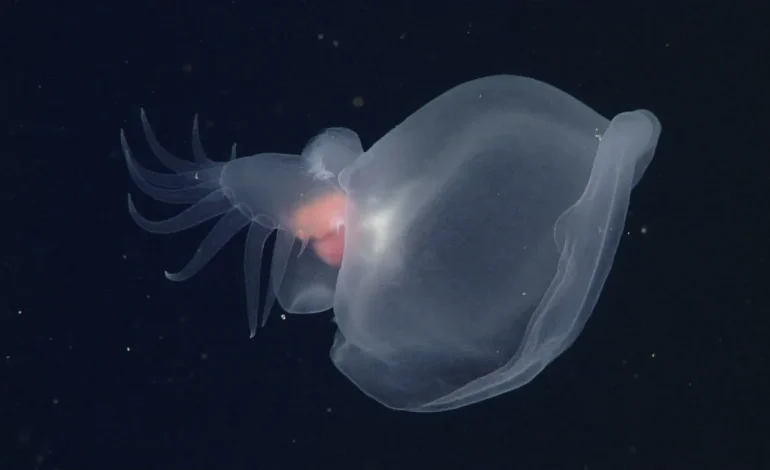Scientists have unveiled a remarkable new species of sea slug, dubbed the “mystery mollusk,” dwelling in the ocean’s enigmatic midnight zone, CNN reports.
This apple-sized creature, named Bathydevius caudactylus, is unlike any sea slug previously encountered, boasting a unique combination of bioluminescence, a paddle-like tail, and a large gelatinous hood.
The discovery, detailed in a study published Tuesday in the journal Deep Sea Research Part I, sheds light on the extraordinary adaptations of life in the midnight zone, the vast and largely unexplored habitat extending from 3,300 to 13,100 feet below the ocean’s surface.
Researchers from the Monterey Bay Aquarium Research Institute (MBARI) first observed this unusual animal in 2000 during a deep-water dive expedition using the remotely operated vehicle Tiburon. Since then, they have documented over 150 sightings of the “mystery mollusk.”
“We’ve invested more than 20 years in understanding the natural history of this fascinating species of nudibranch,” said senior scientist Bruce Robison, co-lead author of the study. “Our discovery is a new piece of the puzzle that can help better understand the largest habitat on Earth.”
Bathydevius stands out from other sea slugs due to its unusual morphology. Its distinctive hood-like structure and fringed tail, along with its colorful internal organs visible through its transparent body, led scientists to initially question its classification.
Further investigation, including analysis of a collected specimen, revealed its true identity: a nudibranch, but one uniquely adapted to survive in the midnight zone.
Bathydevius utilizes its hood to trap crustaceans like mysid shrimp, a crucial adaptation for a creature living in a food-scarce environment. It also possesses the ability to bioluminesce, likely to distract predators, and can even detach a glowing tail appendage as a decoy.
The discovery of this remarkable species highlights the vast and unexplored biodiversity of the deep sea. However, the authors warn that deep-sea mining, which involves extracting minerals from the seabed, could pose a significant threat to the survival of Bathydevius and other unique deep-sea creatures.
“Deep-sea animals capture the imagination. These are our neighbors that share our blue planet,” said Robison. “Each new discovery is an opportunity to raise awareness about the deep sea and inspire the public to protect the amazing animals and environments found deep beneath the surface.”









